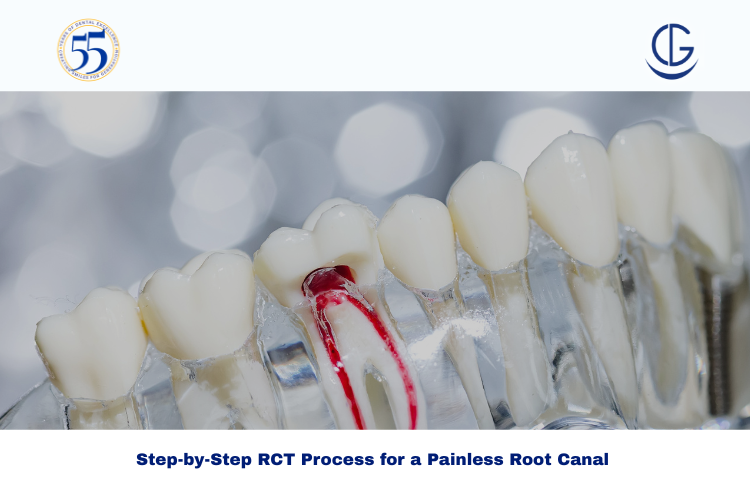Schedule Appointment




If you are searching for a trustworthy and painless remedy for tooth pain or infection, you need to know what the RCT process (root canal treatment) involves! At Dr Gowds Dental Hospital Hyderabad, we proudly provide comfortable and effective root canal therapy to save your natural teeth and relieve your pain in an efficient manner.
The root canal treatment (RCT), is a dental procedure to get rid of infection/disease/damaged tissue inside your tooth pulp – the soft tissue in the center of the tooth that contains nerves and blood. The pulp can become infected or inflamed due to decay, trauma, or deep cavities. RCT eliminates infected/diseased pulp to stop the spread of infection and save your tooth from being extracted.
Root canal treatment is often the best alternative to tooth extraction. It helps:
At Dr Gowds Dental Hospital, we ensure the RCT process is as painless and comfortable as possible through modern techniques and anesthesia.
Firstly, through the use of X-rays, the dentist will carry out a thorough dental examination in order to check the status of dental crown and root canals. Root canal treatment will be figured out with the help of this examination and the procedure will be planned accordingly.
Local anesthesia is given to the sight and the vicinity around it so as there will be no feeling of pain in the course of the treatment. Most patients, who have undergone the procedure, state that they barely felt any discomfort.
Through the creation of this tiny hole in the tooth crown (top), the dentist will be able to remove the infected pulp chamber and root canals.
Specialized instruments are used to remove the infected pulp tissue from the canals. After this step, the canals are treated with cleaning agents and are disinfected. Finally, the canals are constructed to be of appropriate size and shape as well as be ready to be filled.
The root canals that have been cleaned and shaped are then packed with a biocompatible material known as gutta-percha which is used to seal that space and avoid that the microorganisms come back in again.
Either a temporary or a permanent filling will be put in place so as to seal the access opening. In many
A follow-up visit may be scheduled to ensure proper healing and evaluate the tooth’s condition. Maintaining good oral hygiene is critical to the long-term success of the treatment.
If you experience any of the following, consult a dental professional immediately:
Early intervention improves treatment success and prevents complications.
Located in Hyderabad, Dr Gowds Dental Hospital is renowned for its patient-centered care and advanced dental technology. Our experienced endodontists ensure every step of the RCT process is carried out with precision, making your root canal treatment truly painless and effective. Patient comfort and satisfaction are our top priorities.
By fully knowing the RCT process, it will, hopefully, lessen any fears or anxieties you may have about root canal treatment. By using this step-by-step guide and trusting the professionals at Dr Gowds Dental Hospital, you will achieve a painless and durable treatment that preserves your natural tooth and relieves your symptoms. If after the RCT your symptoms return or worsen, always seek advice from professionals without delay.
The root canal therapy (RCT) process will involve the removal of the infected pulp from inside a tooth that has become infected. The removal of the infected pulp will save the tooth from further damage. Due to local anesthesia and the techniques available today, the RCT process is usually painless.
Most root canal treatments can be completed in one visit or two visits, depending on the condition and complexity of the tooth.
We recommend that you do not chew on the treated tooth until your dentist has placed a permanent crown or filling to protect it.
Dr Gowds Dental Hospital employs advanced technology and expertly trained professionals, in combination with expert care, to ensure every patient has a comfortable, virtually painless RCT process.
If you don’t get the root canal procedure completed, the infection will continue to worsen, and will likely cause tooth loss and may result in serious complications for your overall health.